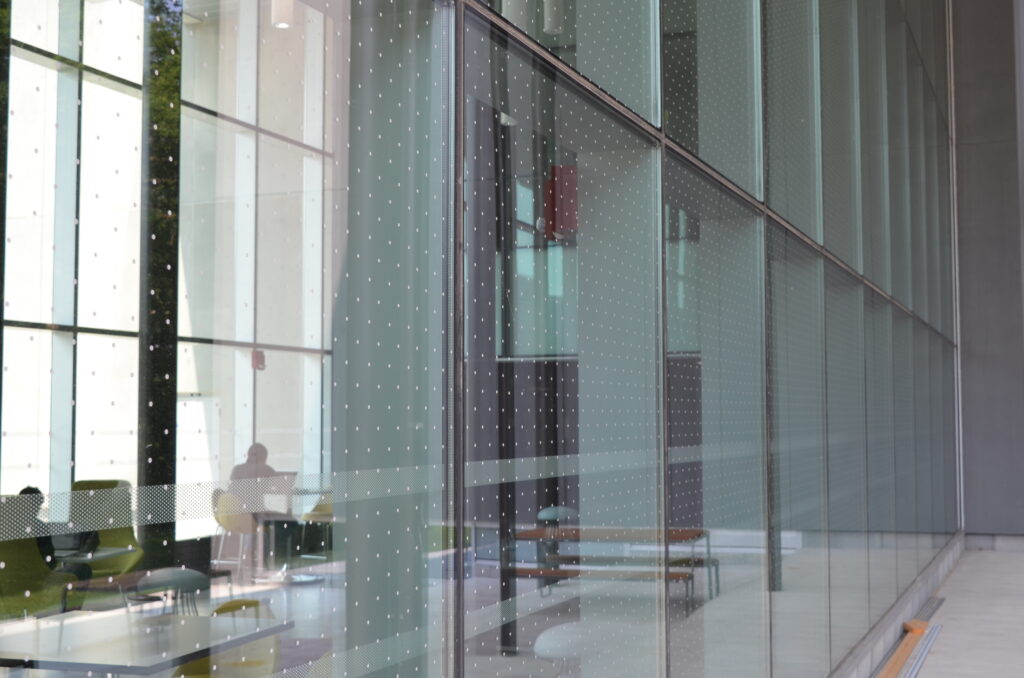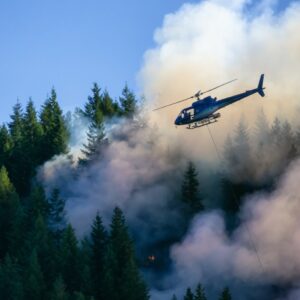JUNE 4 UPDATE: As of June 3, Bill 17 has passed the third reading and will imminently become law. FLAP is continuing to follow the interpretation of this bill by municipalities and assessing next steps. If you have questions, reach out by contacting Brendon at [email protected]
In the wake of Bill 5, the Protect Ontario by Unleashing Our Economy Act, on May 13, 2025 the Government of Ontario announced a second piece of legislation titled Bill 17, the Protect Ontario by Building Faster and Smarter Act. The first schedule of Bill 17 is related to the Ontario Building Code and aims to clarify the provincial government’s position on how local municipal governments are allowed to influence the planning approval process for new developments.
FLAP is concerned that this legislation appears to be intended to remove existing Green Building Standards, including bird friendly building design requirements for new development approvals implemented by the City of Toronto through the Toronto Green Standard as well as by numerous other municipalities across Ontario. This represents a significant setback for FLAP Canada’s conservation efforts that will remove key protections for migratory birds. To put this in contemporary political terms: reducing the millions of bird collisions occurring in Ontario every year through building design is being classified as unnecessary “red tape” that impedes housing development and affordability.
This blog looks beyond slogans to examine what this legislation means for birds and people working to protect them.

Background: how new developments are planned in Ontario
For the past three decades, the prevailing interpretation of Ontario provincial legislation that applies to planning new developments, including the Planning Act, the City of Toronto Act and Ontario Building Code Act, has enabled municipalities to regulate certain aspects of the designs of buildings and the sites surrounding them.
Proponents (developers) who want to construct a new building must apply to the municipality for approval. For certain categories of buildings, such as institutional and commercial buildings and multi-unit residential buildings containing 10 or more units, the process is known as site plan approval. Notably, site plan approval does not apply to single-family residential homes, which are the most numerous category of buildings that cumulatively kill the greatest number of birds. The municipality, which holds planning authority to approve or reject a development application, can impose conditions on approval of a site plan, such as by expecting a developer to adhere to standards given under municipal bylaws. The Planning Act and City of Toronto Act authorize municipalities to determine what must be included in an application submitted by proponents in order for that application to be considered complete and for the process to move forward.
Following this interpretation, numerous municipalities have implemented “Green Building Standards” through site plan approval, either as voluntary measures or mandatory conditions. Green Building Standards are considered an essential component of municipal climate change plans, which are necessary for reducing greenhouse gas emissions associated with new buildings as well as buildings undergoing major renovations. Green Building Standards also support municipal biodiversity goals; for example, reducing bird collisions preserves the many positive services that birds provide for local economies and ecosystems as well as climate change mitigation and adaptation, such as services like seed dispersal, pollination and pest insect control. Municipalities enacting Green Building Standards tend to keep them consistent with what other municipalities are already using, making them straightforward for developers, builders and architects to follow.
Green Building Standards are treated by municipalities and industry as a companion to the Ontario Building Code, which sets the absolute minimum specifications that all buildings must achieve to be legally constructed and operated across the province. Green Building Standards include measures that are beyond the scope of the Ontario Building Code and may exceed minimum Building Code specifications for aspects that affect resilience of buildings to climate change, such as energy performance and controls for extreme weather.
Bird safe building design is an example of a measure that has historically been included in many municipal Green Building Standards. In some municipalities such as the City of Toronto, all developments that require site plan approval must comply with the city’s Bird-Friendly Guidelines under the Toronto Green Standard. More recently, other municipalities have adopted the national CSA A460 Bird Friendly Building Design standard into their bylaws. The Toronto guidelines and CSA A460 are the two preeminent standards used in Ontario that are uniform across jurisdictions.

What is Bill 17?
If passed, Bill 17 would restrict municipalities from implementing standards for regulating construction of buildings. Based on our current understanding of the legislation, this would eliminate existing bird friendly building design requirements enacted by Ontario municipalities, such as the Toronto Green Standard, and set a precedent for rolling back protections that could impact all of Canada. Moving forward, developers would be free to decide whether or not to include bird safe design in their projects on a voluntary basis.
The province’s technical briefing on Bill 17 includes the following description:
Streamlining municipal development processes
| Initiative |
Current State |
Future State |
| Ensuring municipalities abide by the Building Code |
The Building Code Act requires that municipalities adhere to the provincial standards outlined in the Code and prohibits them from passing by-laws regarding building construction.
However, builders still encounter different construction requirements depending on project location and municipal preferences. |
Establishes clarity that municipalities cannot require standards beyond the provincial Building Code.
Aims to reduce costs and provide consistency across Ontario, preventing developers from redesigning products for different jurisdictions — helping to build more homes faster. |
It is unclear how the first schedule of the bill, which focuses on the Building Code Act, would interface with City of Toronto Act and section 41 of Planning Act that provides planning approval authority to municipalities (as discussed earlier). The province is proposing for new regulations under the Planning Act to restrict municipalities from requiring studies related to urban design to be included in development planning applications. It is also unclear what the briefing means by referring to construction requirements and standards; municipalities do not consider Green Building Standards to be construction standards, and municipalities are already in full compliance with the Ontario Building Code.
FLAP has been advocating for bird safe building design for over 30 years. The organization’s experiences in Ontario with different approaches to implementing standards at the municipal level, as well as extensive peer-reviewed scientific research, suggest that voluntary measures are insufficient to drive change at the scale required. Mandating bird safe design to be applied during the planning process is the only effective way to ensure that developers will follow current best practices. Otherwise, bird safe design is downgraded into the category of “nice-to-have” and will become increasingly difficult for developers to justify including, even though the cost impacts for new buildings are minimal. The Government of Ontario has not provided any evidence to support their rationale and apparent belief that municipalities regulating the designs of buildings to prevent bird deaths, along with other green building measures, somehow impede industry from building housing. How will this legislation protect Ontario?

Bill 17 may expose owners of new buildings to serious risks
Preventing bird collisions with glass is not only important for the safety of animals involved, and to the health of building occupants who may be adversely impacted by continually hearing thuds and encountering carcasses at their doorstep: bird safe design is also a “due diligence” measure that is necessary to shield current and future owners of buildings from liability.
In Ontario, it is illegal under both provincial and federal laws for building owners to kill birds by way of causing collisions with glass, whether intentional or not. The Migratory Birds Regulations (2022) clarify that incidental take of listed migratory bird species includes collisions with glass. In the landmark 2013 lawsuit Podolsky v. Cadillac Fairview, the judge from Ontario’s Superior Court of Justice ruled that the defendant had contravened Ontario’s Environmental Protection Act, Ontario’s Endangered Species Act and Canada’s Species at Risk Act by failing to act on information about bird collisions ongoing at their property that resulted in the deaths of listed species. The defendant was ultimately not charged because they were able to demonstrate mitigative actions that were considered at the time to be acceptable due diligence.
If charged under Canada’s Species at Risk Act, a property owner may be liable to pay fines of up to $1 million per bird killed at their building. To put this into perspective, some of the individual buildings that FLAP volunteers monitor in downtown Toronto are associated with collisions involving dozens of individual birds listed under the Act. Following the precedent set by the 2013 lawsuit, if a building owner is charged for contravening provincial or federal law, they may demonstrate due diligence by treating their glass, or else they could be subject to financial penalties.
The cost of retrofitting an existing building to mitigate bird collisions is typically much more expensive than embedding bird safe design in the initial construction. It would be logical for the building owner facing these costs to seek restitution from those responsible for the building’s initial construction who arguably exposed them to a known liability. Although a legal challenge of this nature has not been tried in court yet, Bill 17 is setting up the conditions for building owners, builders and the provincial government to potentially be exposed to liabilities in the future.
Limiting exposure of building professionals and property owners to liability is one of the primary functions of building codes, yet the Ontario Building Code does not include any reference to bird safe design. FLAP continues to advocate for the CSA A460 standard to be embedded in the Ontario Building Code which would render municipal standards obsolete and extend bird safe design across the province to all new building construction.
What happens next?
As of the time of this blog’s publication on May 30, Bill 17 is currently being debated at the second reading. We heard from an insider that the bill will bypass going to a standing committee of the legislature for further discussion, meaning that there will be no opportunity for the public or interested parties to participate in the process. Schedule 1 of the bill which applies to the Building Code Act does not appear on the Environmental Registry of Ontario; however, comments may be submitted to a notice posted for a related regulation affecting the City of Toronto Act and the Planning Act, and what municipalities can require developers to include in complete planning applications, such as studies relating to urban design (see below). FLAP is continuing to follow this process closely and will publish updates as they become available.
If Bill 17 receives royal assent and becomes law, municipalities may no longer be able to regulate bird safe design in new building construction. FLAP may need to increase its focus on updating the Ontario Building Code as the appropriate vehicle for regulations to protect birds in the built environment. The federal government can also play a role by embedding a bird safe design standard such as CSA A460 into the National Building Code, which serves as a model for provinces and territories to adopt into regulation.
What you can do now:
- Submit comments to the Environmental Registry of Ontario on proposed regulations that would restrict municipalities from requiring urban design studies (i.e., showing compliance with bird safe design standards) as part of complete development planning applications. You may review FLAP’s submission to the ERO for suggested language to include.
- Write to your Member of Provincial Parliament (MPP)to let them know that municipal Green Building Standards and bird safe building design measures are important to you.
- Sign FLAP’s petition calling on the federal and Ontario provincial and governments to enforce existing regulations and create new incentives for buildings to be made safe for birds.







